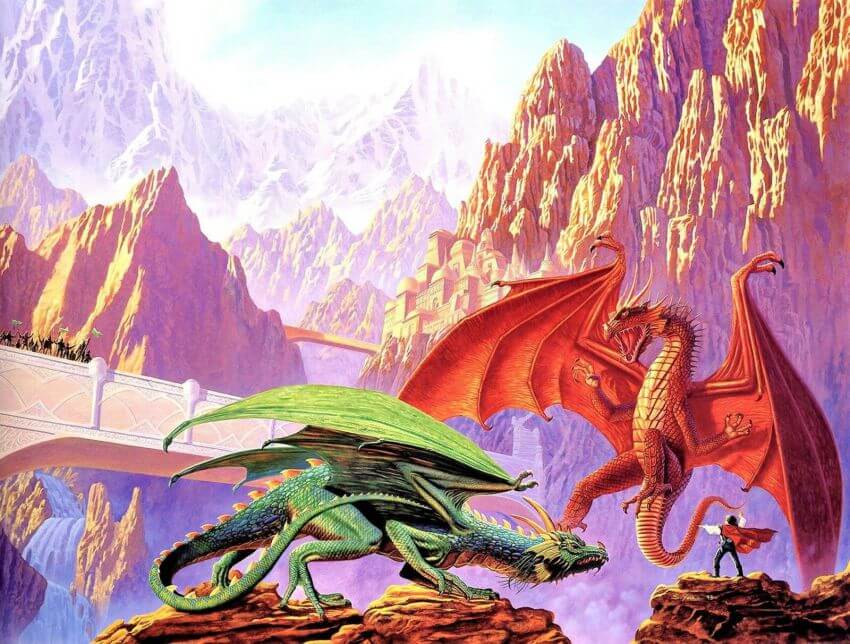07 Mar Book review: ‘The Death Gate Cycle’ by Margaret Weis and Tracy Hickman
Rereading this series I encountered in my teenage years has been a total success. Unsurprisingly, this new reading has stripped it of the masterpiece aura I gave it then, but it still passed the test by a large margin. In this collection of books there is room for reflection on major themes but it is above all sustained by charismatic characters, a rich and complex universe and an addictive narrative rhythm that leaves enough space for details. Spoilers ahead.

In my opinion, this series reaches the highest levels within the fantasy genre (with Sapkowski’s permission) because, despite leaning on many of the traditional stereotypes, it creates a totally genuine new space. It strays to a great extent from the usual narrative thread: although we also have the figure of the hero (several of them, in fact), instead of humble beings who discover their power little by little, the protagonists emerge from among those who up to now saw themselves as gods. Their final feat will not be to actively fight for the salvation of the universe, but rather their salvation largely relies on their ability to accept the limitations of their power, to remove themselves from the equation, and to accept that they have no right to rule over anyone’s life. We therefore travel the opposite path to that followed by many stories of the genre.
The Death Gate universe is rich and complex. The idea of multiple coexisting worlds gives the plot its other brilliant ingredient. The revelation that gives context to this multiverse is one of the most memorable moments of the series among many others: this cosmos is not alien to us; we are reading about a future world forged from our own, in which, after a series of disasters caused by our own conflicts, a revival of magic took place.
If there is something where this series wobbles a bit, in my opinion, it is the low level of detail towards the end of the plot. The last book takes us from here to there in a frenzy that sometimes becomes incomprehensible. For this reason, I think the best ones are the first four books, in which the presentation of the four worlds takes place, as well as ‘Into the Labyrinth’, in which the protagonists finally awaken to their true selves and the titanic task that they have before them.
I found the annexes that accompany each volume very interesting on my first reading, and even more so on the second. On them, specific aspects of this universe are expanded: history, geography, magic theory… The authors show a whole display of imagination that leaves few gaps unresolved. I especially enjoyed the explanation of the Patryn and Sartan magical system: “reality is the manifestation of intersecting waves of possibility” and it can be modified through runic magic, creating new waves that intertwine with the wave of reality.
In short, a highly recommended collection for all those who enjoy epic fantasy and a well-developed magical universe. For those who have also read the Dragonlance Chronicles there is even the odd surprise. I am sure that I will return to these books in the future and that it will again be a fascinating experience.
I translated this piece from my book review blog (originally in Spanish).
This journal is intended to be a collage of topics that inspire me. If you would like to get notified whenever I post new content, feel free to subscribe to my email list. Thank you for reading!

